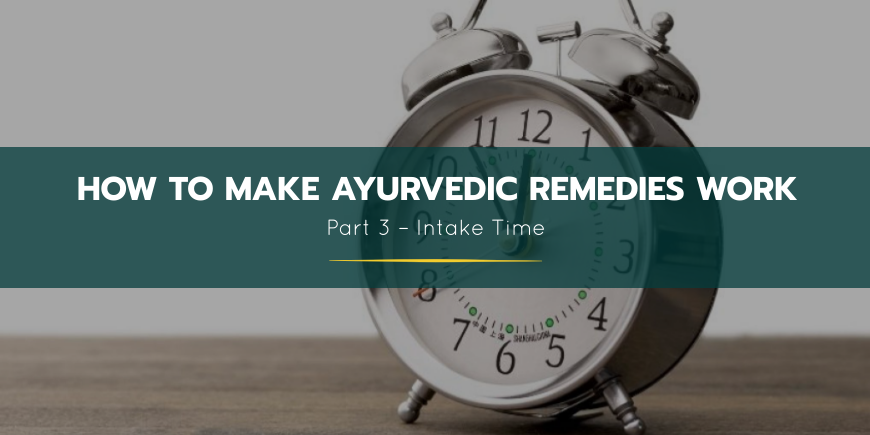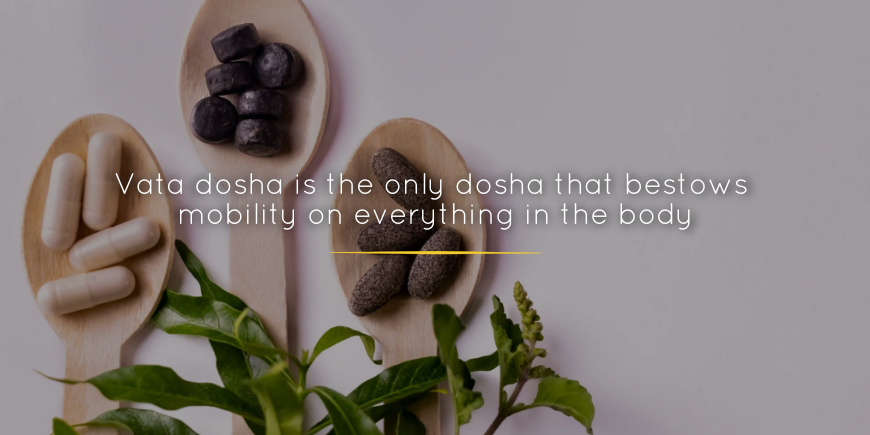
Introduction
In the previous blogs, we saw multiple factors that affect the efficacy of Ayurvedic remedies/medicines. Some of the crucial factors discussed in previous blogs are –
- Body type
- Removal of the causal factors
There are many more factors responsible for the efficacy of Ayurvedic remedies, for example, age, strength, the stamina of the patient, intensity of the disease, etc.
However, there is one crucial factor regarding the Ayurvedic remedy that can make or break the final effect – the dosage time.
The logic behind Specific Dosage Time in Ayurveda
Ayurveda believes that the human body has a natural biorhythm. This biorhythm aligns our metabolic energies with the universe.
This biorhythm is a complex of multiple bio cycles running inside the body, for example, the circulatory cycle, the respiratory cycle, etc.
Each of these cycles depends on multiple external and internal factors. For example, the lunar phases directly affect blood circulation and the menstrual cycles. Solar radiation accelerates metabolism and elevates mood. This is the reason people living in Nordic countries suffer from digestive disorders and depression. Because they do not have any exposure to sunlight for six months.
Vedic wisdom states that “yatha pinde tatha brahmande” (the particle has all the properties of the universe).
CharakSamhita compares the dosha to the universal forces. According to AcharyaCharak, vata is akin to air, pitta resembles the sun and kapha nourishes the body like the way the moon nourishes the living beings on earth.
As we all are so deeply connected to the universe, our biorhythm decides the effect of food or medicine we consume.
The Dosha Cycle
Biophysical energies or doshas follow regular daily, monthly and annual cycles. Our organ systems perform their functions according to the dosha cycle.
Every cycle starts with kaphadosha, reaches its highest point with pittadosha, and terminates under the influence of vata dosha. This cyclic pattern applies everywhere.
For example –
Dosha and Life cycle
Kapha governs the first phase of life – (0-30 years). Pittadosha takes over the middle phase of life (30- 60 years). Vata dosha dominates the body metabolism during old age ( 60+ years).
Dosha and daily cycle
Ayurveda divides the day and the night into three parts. Kaphadosha influences the first part of the day, starting at the time of sunrise (6 am-10 am approx.). Pittadosha is dominant during the middle part (10 -2 pm approx.). And vata dosha takes over the last one-third duration (2 – 6 pm).
The night also follows the same dosha cycle.
The Vata Cycle
Another critical aspect of the dosha is the bio-cycle of vata subtypes. Vata dosha is the only dosha that bestows mobility on everything in the body. An Ayurvedic proverb from Ashtang Hridaya states –
Without Vata dosha, all elements within the body, pitta, kapha, waste, or tissue systems, are paralyzed. Vata moves everything inside the body like the way air moves the clouds.
Therefore, everything moves inside the body only because of vata dosha. The functions of vata dosha have five categories. These five subtypes of vata dosha perform specific sets of functions. For example, Pranavayu covers cerebral activity (thinking, feeling, etc.) and respiration.
Five vata subtypes control the different metabolic pathways. They are –
- Pranavayu: Brain activity, respiration
- Udanavayu: Swallowing, speech control, burping, yawning, etc.
- Samanavayu: All activity in the digestive tract
- Vyanavayu: All the minor transport activities or major displacement like walking, running, etc.
- Apanavayu: Excretion or expulsion of a fetus, baby, menstrual fluid

Eleven Types of Intake Occasions for medicines
As per Ayurveda, there are eleven Aushadh seven kaal or times when you should take your medicinals.
- Abhakt (on empty stomach)- taking medicine early in the morning on an empty stomach. This time is conducive for almost all medicine. Medicine consumed at this time has a very powerful impact on the body.
- Pragbhakt(before meal) – medicine intake before breakfast or before the first meal of the day. This medicine follows the apanavayu pathway and affects the excretory, urinary, and reproductive systems.
- Adhobhakt (after meals)– medicine intake after a meal. The medicine you eat after the morning meal travels through the vyanavayu pathway and spreads mainly in the organs above the naval. The medicine is eaten after the evening meal and spreads through the udanavayu pathway and works on the chest and throat region. It is esp effective in relieving kapha related disorders.
- Madhyabhakt(in the middle of meal) – medicine intake in the middle of the meal. This medicine influences the saman vayu pathway. It is especially effective in pitta-related digestive disorders.
- Antarabhakt(between meals in day) – medicine intake after complete digestion of food eaten during lunch. This medicine is taken normally between lunch and supper/dinner. This medicine is especially effective for cardiac disorders.
- Sabhakt (mixed with food)- the intake of medicine with food. This medicine affects the entire body. However, its effect is mild. Thus, it is beneficial to the weak, the sick recovering from disorders, and children. This medicine is very effective in general disorders like fever, digestive disorders, etc.
- Samudga (before as well as after meals ) – the word samudga means “in the middle of two things.” When medicine is sandwiched between two parts of a meal, then it is called samudga. If you eat half of your meal, eat the medicine, then consume the other half of your meal, then the medicinal intake is samudga.
- Muhurmuhur (on and off)– muhur muhur means “again again.” This medicine is similar to medicine intake in SOS or emergency conditions. In this case, you take medicine frequently, after a fixed interval, for example, after every one hour. You can also take the medicine whenever required. For example, medicine for frequent cough is used whenever there is a coughing fit.
- Sagras(with first morsel of food) – taking medicine with each bite. This method of medicinal intake is especially effective. Helpful in pranavayu disorders.
- Grasantar(between morsels) – the word grasa means a bite. This method of ingesting medicine is known as the grasantar method of medicinal input. This method is very effective in the case of cardiac, and respiratory disorders.
- Naish (at bed time)– medicine intake before bed. This is the most suitable time to consume medicines for head and throat disorders. Mild laxatives also work effectively when consumed before bed.
These are the most significant medicine intake rules. However, these are the fundamental guidelines. Ideally, you must consult an Ayurveda physician to ascertain the appropriate time to consume medicine for any specific disorder.
Importance of Dosha Cycle
The dosha cycles determine the digestion, absorption, and effect of the Ayurvedic remedies or medicines on the body. The vata subtypes activate specific metabolic pathways at specific phases of the day.
For example –
The pranavayu that controls cerebral activity becomes active after sunset.
If you want to take any medicine for insomnia, you must take it when the vata pathway for the brain region is active – the pranavayu.
Therefore, you must take insomnia medicine after sunset or before bed for the most beneficial effects.
However, if taken early in the morning, the medicine will land in the apanavayu pathway.
Apana way is the vata subtype that controls the excretory pathways like the large intestine, urinary system, etc.
In the case of insomnia, this medicine will affect the excretory organs rather than give direct relief.
That’s why the time of medicine intake is crucial. Ayurveda defines rules for taking medicines at a time when the relevant vata subtype is active.
Take Away
Intake time is a crucial factor that has a direct impact on the therapeutic efficacy of Ayurvedic remedies. Each time of the day has a special biorhythm. Different metabolic pathways open during these phases of time. Medicinal intake during the relevant time of the day ensures a better rate of medicinal absorption.
Discover the power of Ayurveda and revolutionize your approach to health with our Ayurveda Certification Course! Learn from experts in the field as they guide you through the ancient Principles of Ayurveda. Master the art of personalized healing and make a lasting impact on the lives of others. Enroll now and embark on a fulfilling path of holistic wellness.

Responses